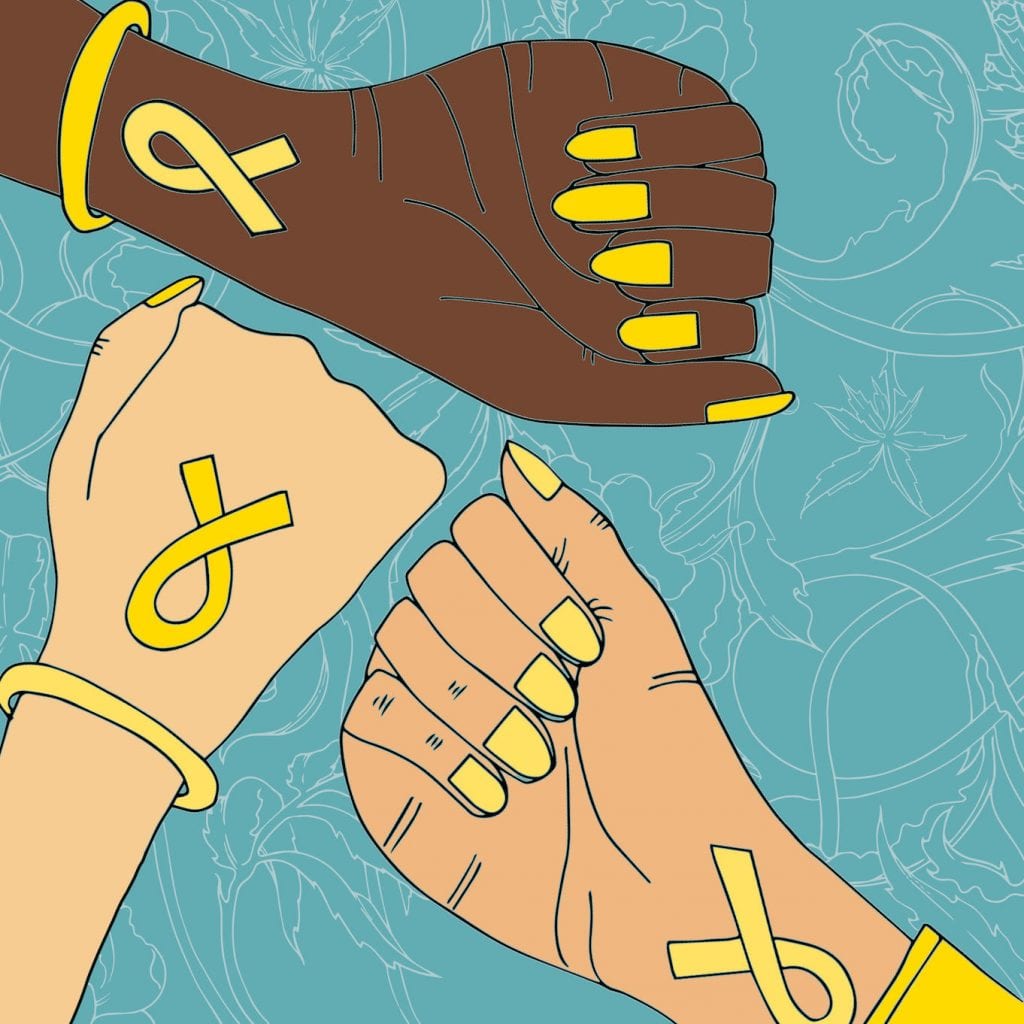
It happens all the time – healthcare professionals routinely ignore women and other people with uteri, their pain minimised and treated as if it is ‘all in their head.’ Never is this more apparent than with endometriosis.
What is Endometriosis?
Endometriosis, often called endo by sufferers, occurs when endometrial tissue (the same material that lines the uterus) grows in other places throughout the body. It can be found in the ovaries, abdomen, bladder, bowel, vagina, and in rare cases, even in the lungs, heart, and brain. As the sufferer approaches their monthly period, this tissue behaves just like that in the womb – cramping, shedding, and bleeding. For some women, the excruciating pain lasts all month, with no respite.
According to Lone Hummelshoj of the World Endometriosis Research Foundation, the disease “affects women in the prime of their life. It is not a lifestyle disease. It is not a disease you get later in life. It attacks teens, young women when they should be out being active, working, having children, having sex – 50% of them are struggling with sex because it is too painful.”
While many women don’t experience any symptoms, those who do often suffer from crippling pain and nausea, making work, socialising, sex, and basic household tasks nearly impossible.
According to the Guardian, endometriosis affects one in ten women in the UK, and an estimated 176 million women globally. However, despite this prevalence, many GPs don’t know what the disease is, let alone how to diagnose and treat the problem. As a result, women suffer in pain and silence. Even specialists are often ill-informed, under-treating and minimising the debilitation and trauma that accompanies chronic pain. When it goes unchecked, endometriosis can also lead to infertility, and it has been correlated with an increase in heart disease.
Endometriosis sufferers are often told, “It’s all in your head”
Hypochondriac. Oversensitive. Overreactor. Malingerer.
These words are familiar to many endo sufferers, who have been misdiagnosed and told that periods are always painful and that they need to ‘get over it.’ Even though notable women like Dolly Parton, Emma Bunton, Hilary Mantel, Whoopi Goldberg, and Lena Dunham all suffer from endo, many women still struggle to obtain a diagnosis and treatment, which must be done via a keyhole surgery called a laparoscopy. While sufferers are often referred to a gynaecologist, the condition affects other organs, including the bowel, stomach, and intestines, that they’re not used to treating.
That said, even in the most severe cases, the condition improves with appropriate specialist care… if you can access it. In many cases, even specialists recommend hysterectomies without realising that high-quality keyhole surgery is now available and can alleviate many symptoms.
Endometriosis UK representatives say that she has a hard time finding members of the general public who’ve even heard of the disease, even though 10% of British women suffer from the condition. In the developing world, many doctors don’t believe the condition even exists, putting their heads in the sand against the tide of plentiful genetic and physical evidence.
Research money is even harder to come by, and funding in the US and the UK is truly paltry when compared to other diseases and chronic conditions that also affect cis men. It is impossible to imagine this happening to a disease that affected everyone, but since it is a ‘women’s issue,’ it has been swept under the rug, disbelieved, and stigmatised.
Do you have endometriosis? What do you think about the care you’ve received? Did you struggle to find treatment or have a doctor listen to your concerns? We want to hear from you – share your thoughts in the comment section.
